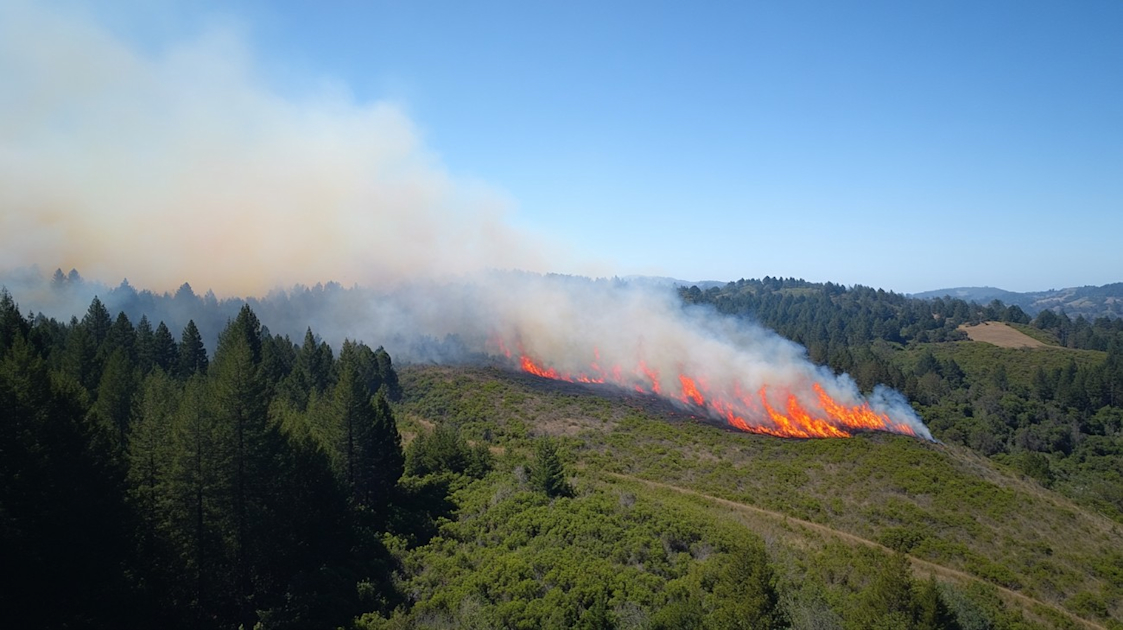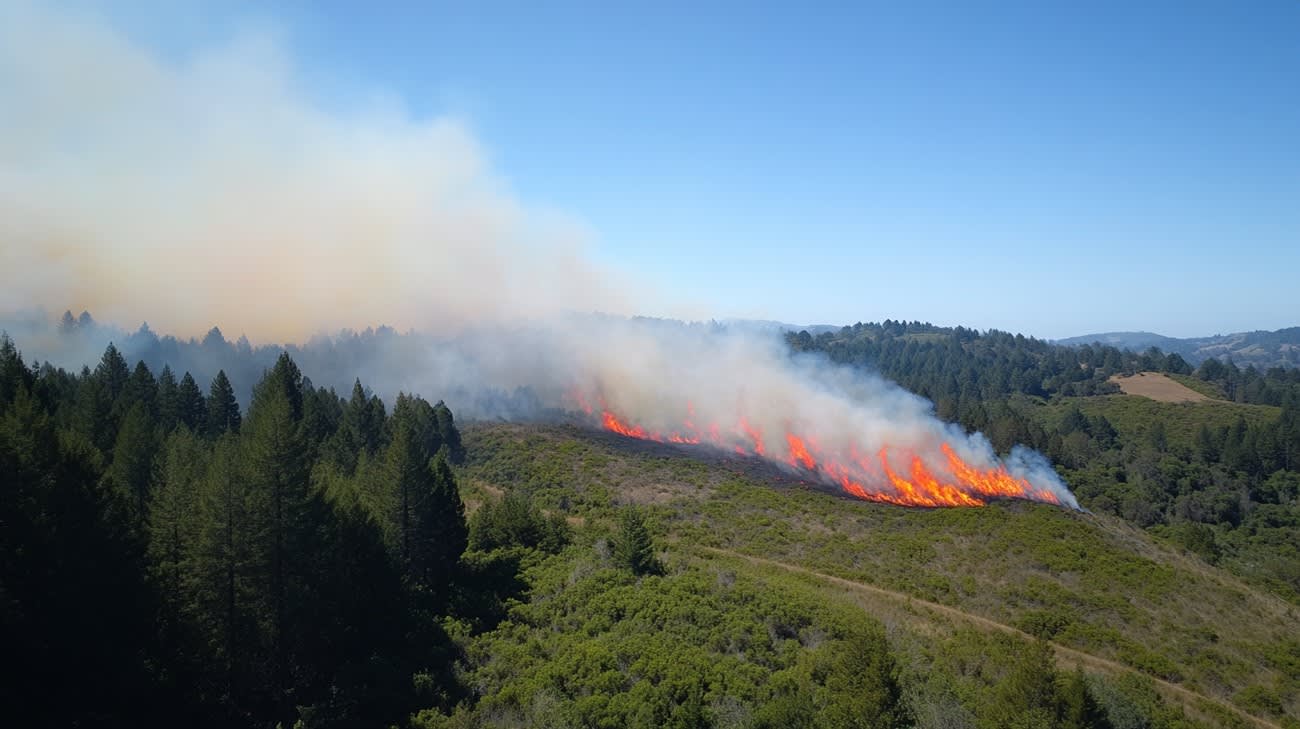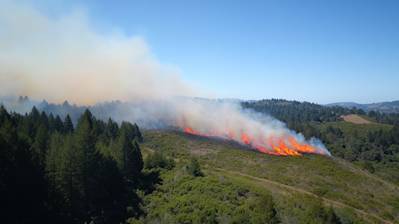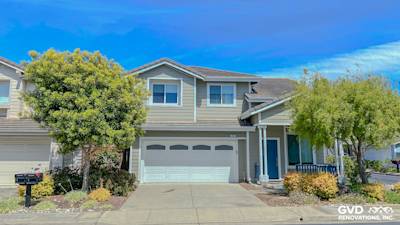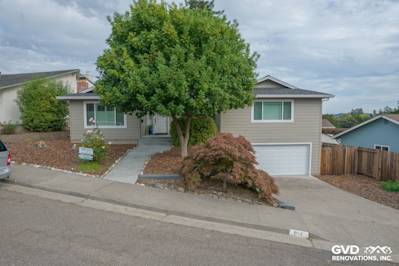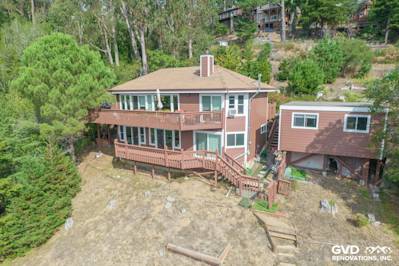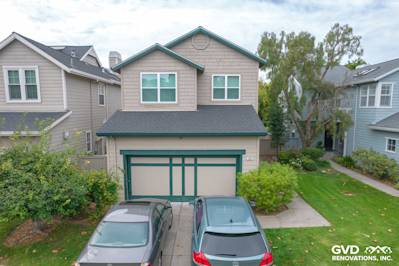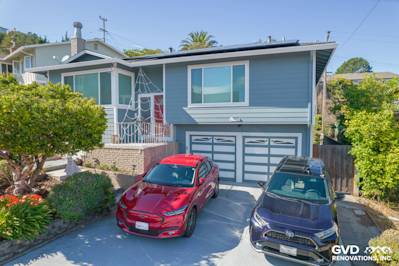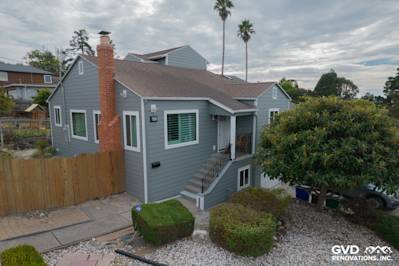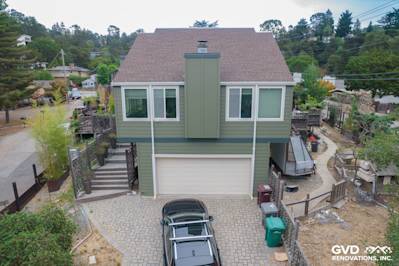Introduction
As climate change continues to impact various regions worldwide, the Bay Area in Northern California has become particularly vulnerable to wildfires. It is critical to understand that wildfire prevention is not solely the responsibility of government bodies and emergency services. It also relies on community awareness and preemptive measures by individuals. This article enlightens us about the efficient strategies for Bay Area wildfires prevention.
Understanding the Frequency and Scale of Bay Area Wildfires
Before diving into the techniques of Bay Area wildfires prevention, it's essential to comprehend the severity and frequency of this issue. The fire season in California lasts from June to November, with conditions being most severe in late summer and fall. Wind, weather, and human activity all play a critical role in igniting these devastating wildfires.
Borrowing Strategies from Indigenous Fire Management
Indigenous fire management practices can play a key role in preventing wildfires in the Bay Area. The use of controlled burns by Native American tribes has been a time-tested, efficient method for managing forest resources.
Key Aspects of Indigenous Fire Management
- Controlled or prescribed burns
- Landscape management for hunting and gathering activities
- The creation of buffer zones that slow or halt wildfire spread
Indigenous fire management strategies teach us that fire can be a tool rather than simply a destructive force if used thoughtfully and responsibly.
Home Hardening - A Key Technique for Bay Area Wildfires Prevention
The concept of 'home hardening' is gaining momentum as a significant method for Bay Area wildfires prevention. This methodology involves implementing specific techniques to your home's exteriors, making it less vulnerable to flying embers that typically intensify wildfires.
Techniques for Home Hardening
- Replacing wood or shingle roofs with fire-resistant materials like metal or tile.
- Using double-paned or tempered glass for windows.
- Ensuring vents are covered with 1/8-inch to 1/4-inch metal mesh screens.
- Using fire-resistant materials for decks and patios.
- Regular maintenance and cleaning of gutters and roofs.
The Importance of creating Defensible Space Zones
Another effective approach for Bay Area Wildfires prevention is the creation of Defensible Space Zones around the property. As per the California Public Resources Code Section 4291, homeowners are required to maintain 100 feet of Defensible Space around their homes in fire-prone regions.
Rules for Creating Defensible Space Zones
- Zone 0: (0-5 feet around the house): Remove all dead plants, grass, and weeds. Use hard surfaces like concrete or noncombustible mulches.
- Zone 1: (5-30 feet around the house): Plant low-growing, fire-resistant plant species. Maintain at least 10 feet of space between trees.
- Zone 2: (30-100 feet around the house): Trim grasses to a maximum height of 4 inches. Leave at least 20 feet of space between trees.
These zones serve as barriers and can significantly reduce the speed and intensity of wildfires, potentially saving properties and lives.
Public Awareness and Community Efforts: The Backbone of Wildfire Prevention
Public education and awareness are crucial for mitigating wildfire risks. Citizen groups, non-profit organizations, and schools hold regular informational sessions and workshops to make communities aware of best practices for wildfire prevention and safety.
Community Wildfire Protection Plans (CWPPs), where residents, fire departments, and local government work together, can also promote shared responsibility and collective action against the threat of wildfires.
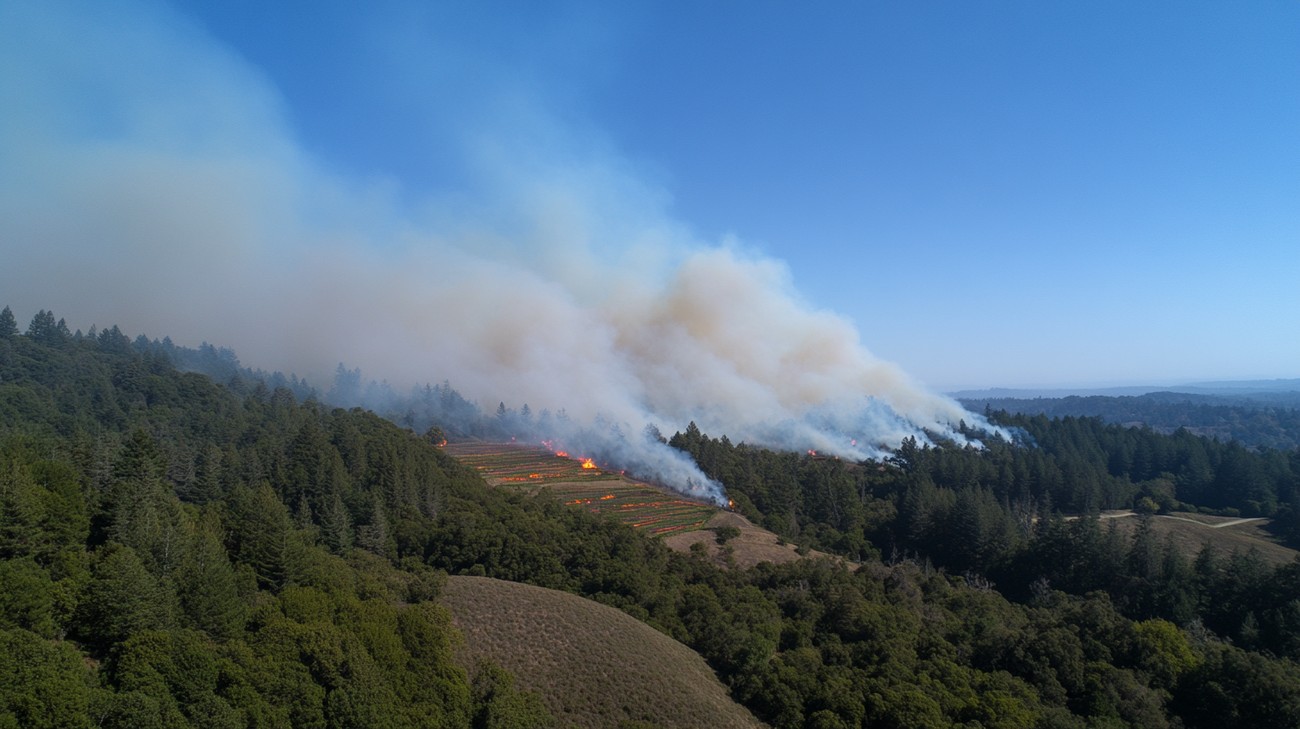
Frequently Asked Questions about Bay Area Wildfires Prevention
How can wildfires in the Bay Area be prevented?
There are several methods to prevent Bay Area wildfires. These include creating defensible spaces around homes by clearing away dry vegetation, using fire-resistant plants in landscaping, constructing buildings out of fire-resistant materials, and carefully extinguishing all outdoor fires. An important aspect of wildfire prevention in the Bay Area also involves public education on fire safety and reporting any signs of potential fire hazards to the authorities.
What does creating a 'defensible space' mean and how does it help in wildfire prevention?
A 'defensible space' refers to the natural and landscaped area around a home or building that has been modified to reduce fire hazard. It helps slow the spread of a wildfire, and serves as a barrier for firefighters, protecting the structure from catching fire.
Why are controlled burns used as a fire prevention method in the Bay Area?
Controlled burns, also known as 'prescribed fires', are intentionally set fires used to control undergrowth and dead vegetation that can fuel wildfires. They lower the risk of uncontrolled wildfires by reducing the amount of available fuel. When performed under controlled conditions by experts, these burns can enhance the health of the forest and promote biodiversity.
How does climate change factor into wildfire prevention in the Bay Area?
With climate change, the Bay Area has been experiencing hotter and drier conditions, resulting in prolonged periods of drought. These conditions increase the likelihood of wildfires. Thus, addressing climate change by reducing greenhouse gas emissions is a key component of wildfire prevention in the Bay Area.
What is the role of government agencies in the prevention of wildfires in the Bay Area?
Government agencies play a crucial role in wildfire prevention in the Bay Area. They are responsible for implementing land management policies, conducting controlled burns, clearing fire-prone vegetation, maintaining open spaces, enforcing building codes in fire-prone areas, and conducting public education campaigns about fire safety.
How can residents contribute to the prevention of wildfires in the Bay Area?
Bay Area residents can contribute significantly to wildfire prevention. They can maintain defensible spaces around their homes, abide by fire safety rules, dispose of cigarette butts responsibly, and avoid lighting fires during periods of extreme fire danger. Residents can also report any signs of wildfires to the authorities promptly.
How does the Bay Area's local flora influence wildfire prevention strategies?
The local flora of the Bay Area, characterized by grasslands, oak woodlands, and dense shrub lands, is highly susceptible to wildfires. Therefore, wildfire prevention strategies often involve managing this vegetation, such as by conducting controlled burns and encouraging residents to clear away dry vegetation around their homes.
Are there any technology advancements helping with wildfire prevention in the Bay Area?
Advancements in technology now play a crucial role in aiding Bay Area wildfire prevention. These include improved weather forecasting models to predict dangerous fire conditions, and satellite imaging to monitor vegetation health. In addition, fire simulation software can predict the potential spread of a wildfire, helping efforts to combat it.

Pros of Bay Area Wildfires Prevention
Enhanced Public Safety
Preventing wildfires in the Bay Area significantly increases public safety. By implementing effective wildfire prevention strategies, local residents' risk of injury or death from fast-spreading and unpredictable wildfires is significantly reduced. These measures can also prevent evacuations that are often traumatic and disruptive to residents' lives.
Protection of Property
Engaging in wildfire prevention activities also protects personal and public property. From homes and businesses to public parks and infrastructure, preventing wildfires from occurring saves countless monetary resources each year that would otherwise be spent on recovery efforts following wildfires.
Prevention of Air Pollution
Wildfires contribute significantly to air pollution. According to the United States Environmental Protection Agency, large wildfires can produce unhealthy amounts of smoke and other pollutants that can worsen air quality days or weeks after the initial fire. Preventing wildfires helps maintain clean air, which is crucial for public health, particularly for groups like children, the elderly, and those with existing heart or lung conditions.
Conservation of Biodiversity
Preventing wildfires is key to preserving local habitats and biodiversity. In the past, wildfires have put many plant and animal species at risk, disrupting ecosystems and decreasing biodiversity. While certain fire regimes are normal and even necessary in some ecosystems, the severity and frequency of recent wildfires in the Bay Area often lead to substantial habitat loss and lasting ecological impacts.
Economic Stability
Wildfire prevention indirectly contributes to the economic stability of the region. By reducing the prevalence of wildfires, the insurance industry can stabilize, leading to reduced premiums for homeowners and businesses.
Cons of Bay Area Wildfires Prevention
High Costs
Implementing effective wildfire prevention strategies can be expensive. Measures like controlled burning, forest thinning, and construction of fire breaks require significant funding. The cost of employing firefighting crews, conducting public education campaigns, and purchasing fire management equipment can also strain governmental budgets.
Risk of Unintended Environmental Consequences
While measures such as controlled burns are often used to reduce the risk of large, uncontrolled wildfires, these activities can sometimes have unintended negative environmental effects. For example, controlled burns can still produce considerable amounts of smoke, contributing to air pollution.
Disruption to Natural Fire Cycles
Preventing all wildfires can disrupt natural fire cycles, which can actually make ecosystems more susceptible to larger, uncontrolled fires in the long term. Certain ecosystems, such as the chaparral shrublands common in the Bay Area, are adapted to regular, low-intensity fires. Prolonged periods without fire can lead to accumulation of fuel (like dead plant material), which can produce larger, more intense fires when they do occur.
Potential Social Resistance
There can be social resistance to certain wildfire prevention measures. For instance, controlled burns near residential areas can be unpopular due to the smoke they produce and their perceived risk. Additionally, construction of firebreaks and the thinning of forests can face opposition due to aesthetic reasons or perceived negative impacts on local recreational opportunities.
Trade-offs
The benefits of preventing wildfires need to be balanced against other environmental and social goals. For example, water is often used in large quantities to fight fires, and in areas with water shortages, there can be significant trade-offs.

Myths and Misconceptions about Bay Area Wildfires Prevention
Myth 1: Only Summer and Fall are Wildfire Seasons
Reality
While the risk of wildfires is arguably at its peak during the dry, hot conditions of the summer and fall in the Bay Area, it is a misconception that wildfires cannot occur in other seasons. In fact, wildfires can—and do—happen at any time of the year if conditions are right. Increased temperatures, decreased humidity, high winds, and dry vegetation can cause wildfires in any season. Thus, it is crucial to practice fire safety year-round.
Myth 2: All Wildfires are Bad
Reality
Wildfires do indeed have the potential to cause vast devastation, affecting human lives, property, wildlife, and natural environments. However, it's a misunderstanding to think that all wildfires are harmful. Some wildfires, particularly those managed under controlled conditions, play an integral role in maintaining the biodiversity of certain ecosystems by helping to decompose dead vegetation, kill pests, and promote the growth of certain fire-adapted plant species.
Myth 3: Forests Regrow Identically After a Wildfire
Reality
The idea that a forest will naturally regenerate into its previous state after a wildfire is a common misconception. Fires can alter the terrain, soil composition, and local ecology, potentially leading to the proliferation of different plant and animal species compared to the pre-fire state. Rehabilitation and human intervention may be required to restore a region to its original state.
Myth 4: Thinning Forests is the Best Strategy for Wildfire Prevention
Reality
While thinning forests through practices like selective logging can help reduce the intensity and spread of some wildfires, it's not a foolproof solution. Not all wildfires start in forests; many start in grasslands, brush, or human habitats. Thinned forests can still burn, and sometimes thinning can create conditions that make fires more likely, particularly if not done properly or if the thinning debris is not correctly managed.
Myth 5: Native American Fire Management Practices are Antiquated and Ineffective
Reality
There is a wrongful belief that traditional controlled or "prescribed" burns by indigenous peoples are an outdated method for preventing wildfires. In fact, these practices, refined over millennia, have proven to be highly effective in managing and reducing wildfire risks. Current fire management agencies are learning from and incorporating traditional indigenous burning practices into their strategies.
Myth 6: Outbuilding Wildfires are Rare and Pose Little Threat
Reality
Many people believe that only main buildings, such as houses, are at risk during wildfires. However, outbuildings like barns, sheds, and garages can also catch fire and spread flames to the main residential structures. Keeping these buildings maintained to hinder the spread of a fire is just as critical as safeguarding the main home.
Myth 7: Smoking Outdoors Won't Cause a Wildfire
Reality
Some wrongly assume that tossing a cigarette butt outdoors—especially if it was mostly extinguished—won't cause a wildfire. In fact, something as simple as a discarded cigarette butt can quickly ignite dry vegetation and start a significant wildfire, particularly in windy conditions. Ensuring all smoking materials are properly extinguished and safely disposed of can drastically reduce the risk of starting a wildfire.
Myth 8: If a Wildfire Approaches, Watering Down Your House Will Prevent it From Burning
Reality
While watering your house may help in some cases, it is not guaranteed protection. Embers can travel great distances and get inside homes through vents and other openings, causing fires to start inside buildings. Moreover, available water supplies may not be adequate to prevent a large fire. Complete fire safety requires more comprehensive preparations, such as creating defensible space and using fire-resistant building materials.
Myth 9: Firebreaks Will Always Stop Wildfires
Reality
Firebreaks—gaps in vegetation or other combustible material that can slow or stop the progress of a wildfire—can be helpful but are not always foolproof. Especially in strong wind conditions, burning embers can cross these barriers and ignite fires on the other side. Professionals must carefully consider the construction and placement of firebreaks as part of a broader approach to wildfire prevention.
Summary
Casual Prevention is Key
So, what's the takeaway here about Bay Area wildfires prevention? It's pretty straightforward really: being proactive and ensuring we all do our part is definitely key. It's all about removing potential fuel sources, following safe campfire practices, and reporting any suspicious smoke or fire activity. And, it's really important to remember that every little bit helps, as even a single spark has the potential to ignite a massive wildfire.
Fire Safety is a Shared Responsibility
When it comes to preventing Bay Area wildfires, remember that fire safety is everyone's responsibility. Wildfires can start in the most unexpected ways, from a discarded cigarette to an unattended campfire. By being cautious, aware, and prepared, we can significantly reduce the risk of wildfires. Let's work together to spread the word about wildfire prevention measures. The safer we make the Bay Area, the more we can enjoy its beautiful scenery worry-free!
Small Changes Make Big Differences
Many small changes contribute hugely to Bay Area wildfires prevention. Remember, just as a small fire can become a large wildfire, so too can small prevention efforts create great change. Routine measures like clear away dry vegetation, creating a buffer around your homes or campsites, and promptly reporting any suspicious activities can help to prevent a small spark from becoming a large-scale disaster. And, it allows everyone to continue enjoying the natural beauty that the Bay Area so uniquely offers!
About Bay Area Siding Company
Bay Area Siding Company is located in the heart of Bay Area, CA. We take pride in transforming your homes with high-quality, long-lasting siding solutions. With a skilled team having a collective experience of years under their belts, Bay Area Siding Company provides exceptional service and ensures every project exceeds your expectations. Whether your style is traditional or modern, we customize your siding to match your vision perfectly. Great design, superior materials, and excellent craftsmanship are what the Bay Area Siding Company promises, every time!
We genuinely care about the homes and the people we serve in our great community and we're devoted to providing the best service possible. At Bay Area Siding Company, we don't just work on houses, we make homes look amazing!

